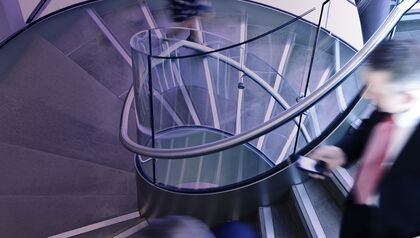Contributor: Anthony Kocheran, Risk Advisory Senior Associate
While in school, University of Iowa basketball player Caitlin Clark netted more than $3 million from name, image and likeness (NIL) deals. She’s far from the only college athlete taking advantage of NIL, a legal concept revolutionizing the way student-athletes can earn money while attending a college or university.
Essentially, NIL allows college athletes to monetize their personal brand by profiting from their name, image and likeness through various opportunities, such as endorsements, sponsorships, social media posts and more. As of July 2021, student-athletes can enter NIL deals if they comply with state law and the NCAA’s rules. This is a stark contrast to the prior landscape of college sports, in which student-athletes were not able to earn even a few dollars from an autograph.
This newfound ability to earn income has the potential to significantly impact the college sports landscape, giving student-athletes more control over their financial futures. Not only has NIL impacted athletes, it has changed the world of college athletics and business.
The Basics of NIL
Through NIL, student-athletes can market their personal brands in a variety of ways. With the rise of TikTok and other social media platforms, athletes can further enhance their image and brand, and engage in brand partnerships, essentially serving as a new pool of influencers. College athletes have successfully endorsed and promoted a variety of products and industries, from athletic-apparel brands and grocery stores to moving companies and fast-food restaurants. NIL deals provide key advantages to athletes, including:
- Financial Literacy and Opportunity
- Brand and Business Management
- Entrepreneurial Freedom
- Community Engagement
- Career Development
Athletes can also earn money through NIL collectives, which are independent organizations that fundraise and facilitate NIL deals for student-athletes. Collectives are often founded by prominent alumni or supporters, and work to pool funds through boosters and businesses. Of the 65 schools that make up the Power Five, it is estimated that 92% have at least one collective.
When the name, image and likeness rules went into effect in 2021, college athletics changed drastically within days. The NCAA website breaks down these changes into four main points:
- Athletes can use professional service providers to help navigate NIL deals
- Students must be in compliance with state NIL laws
- Student-athletes in states without NIL laws can engage in NIL activities by adhering to NCAA rules
- States, individual colleges and athletic conferences can impose reporting requirements, if applicable
The NCAA also states that schools can serve as a resource for students with state law questions, and the NCAA will not monitor for athlete compliance with state laws.
What NIL Means for Businesses
The introduction of NIL rights for college athletes has significant implications for businesses and compliance. NIL deals can be lucrative for the businesses and companies looking to partner with athletes, as it provides access to collegiate talent and the opportunity to connect with a new audience. This can be vital in boosting brand visibility and awareness.
However, it is important for businesses to navigate these waters with caution, as there are compliance concerns to consider. NCAA regulations regarding NIL rights are complex and vary by state, so businesses must stay up to date on the latest developments to ensure they are operating within the bounds of the law.
For example, business cannot provide non-cash compensation, such as a free meal, to an athlete without the athlete earning the benefit through NIL in some way. Additionally, universities and colleges may have specific co-branding requirements if a company wishes to use the athlete’s school logo in marketing materials.
With a variety of rules and regulations to follow, it is crucial for businesses to have a thorough understanding of NIL and a solid compliance plan in place before engaging with college athletes.
Recent Changes To NIL
In the two years since the NCAA passed its interim policy, the NIL landscape has continued to change dramatically. It is now estimated that over a billion dollars’ worth of deals have been made with student-athletes. After multiple congressional hearings and proposed legislation, universities are faced with a future that is uncertain. Last December, NCAA President Charlie Baker released a memo that proposed Division I schools pay athletes directly through NIL deals in ways that are not tied to educational resources. If approved, this change would be a complete overhaul on how NIL funds are distributed to athletes.
At the beginning of this year, new draft legislation was introduced that proposes national NIL rules and the creation of a nongovernmental oversight group to monitor the world of NIL. The legislation would also ban athletic boosters and third-party groups, such as collectives, from compensating athletes to recruit them to specific colleges. These are only a few of latest developments taking place in the NIL space, and throughout 2024 there could be massive changes to how this impacts colleges and universities.
Cherry Bekaert has dedicated a team of professionals to track all NIL updates and trends. The leading firm to devote a team to the ever-evolving NIL space, we are here to provide thought leadership, current and future state consulting, regular updates, change management and ready to stand up services as more guidance comes out. Whether you are a Power Five or a sub-division school, we have solutions tailored for you.




